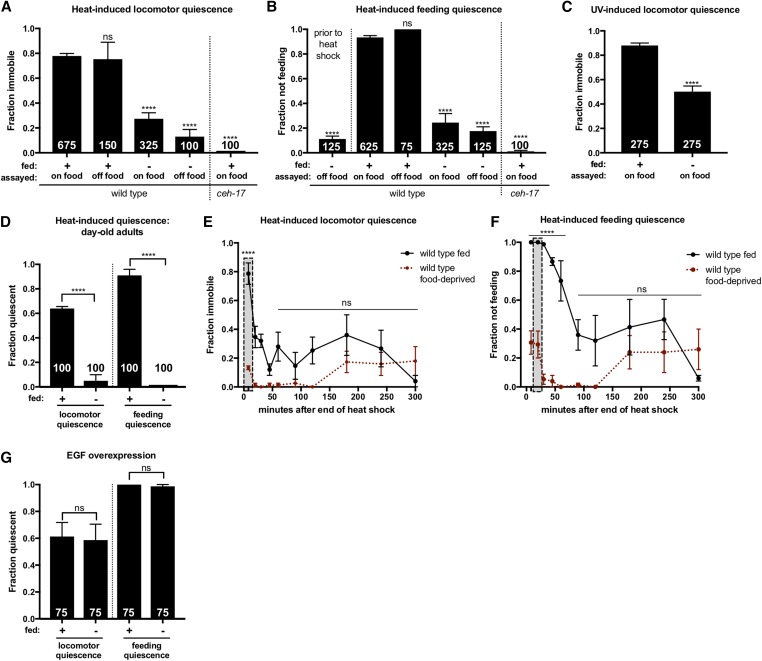Figure 1.
Food-deprived animals are severely impaired for SIS. SIS was measured by examination of immobility and cessation of feeding after a 37°, 11 min heat shock or 45 sec UV exposure (indicated above each graph). (A and B) FD suppresses SIS and this effect is not dependent on access to food. Food-deprived animals were examined for pharyngeal pumping prior to heat shock (B) to ensure that animals continue to pump in the absence of food. (C) FD inhibits UV-induced sleep. (D) Sleep suppression is not specific to the L4-to-adult FD protocol. Animals were deprived of food as prefertile young adults and assayed for SIS 24 hr later. (A–D) One-way ANOVA with Dunnett’s multiple comparisons test. The total number of animals examined is indicated at the bottom of each bar. Error bars represent SEM (25 animals per trial). (E and F) In the hours following heat shock, food-deprived animals show a loss rather than a delay of (E) locomotor and (F) feeding quiescence. The vertical box indicates the peak of ALA-dependent quiescence, examined in single time point SIS assays. Error bars represent SEM of three trials (n = 25 each). Student’s t-test with Holm–Sidak correction. (G) FD does not affect EGF-induced quiescence. Mild heat exposure (33° for 10 min) was used to induce EGF-OE. Two hours after EGF induction, plates were gently moved to the microscope stage for examination of quiescence. One-way ANOVA with Tukey’s multiple comparison test. The total number of animals examined is indicated at the bottom of each bar. Error bars represent SEM of trials (n = 25 each). (See also Figures S1 and S2). **** P ≤ 0.0001. ns, not significant vs. control.

